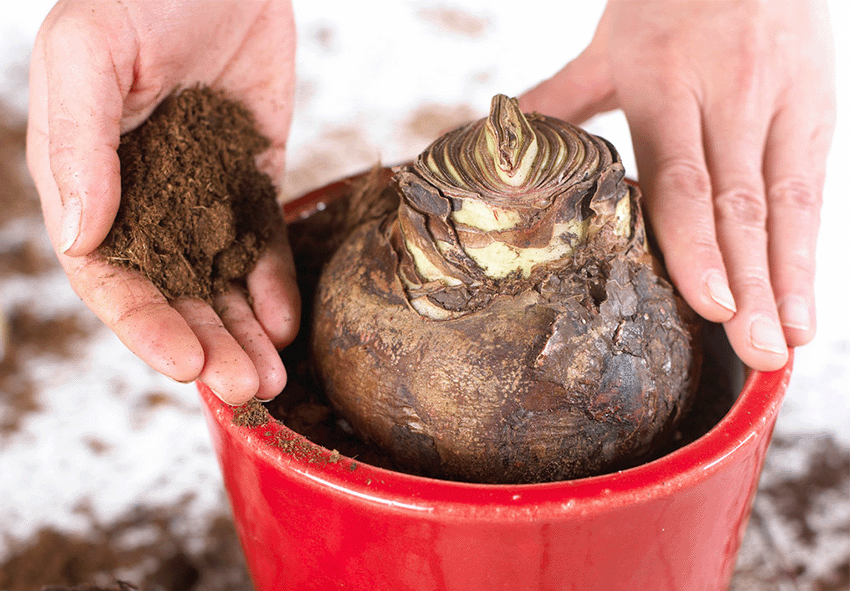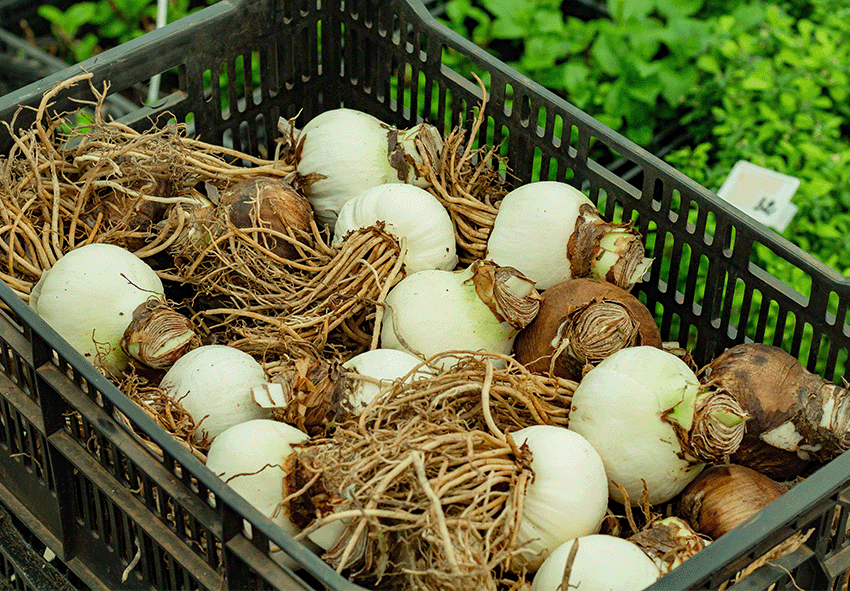Amaryllis bulbs are popular among gardeners due to their beautiful blooms and ease of care. However, many people struggle to care for their amaryllis bulbs after they have bloomed. In this article, we’ll provide you with expert tips and guidance for taking care of your amaryllis bulbs throughout the entire year.
Understanding the Post-Blooming Stage of Amaryllis Bulbs:
After the spectacular blooming period of your amaryllis bulbs, it is essential to understand how to care for them to ensure their health and vitality in the long run. The post-blooming stage is a critical phase where the plant undergoes various transformations. The most notable change is the gradual fading of the flowers, signaling the transition into a new cycle of growth.
The post-blooming stage of amaryllis bulbs refers to the period after the flowering has finished. During this time, the plant transitions from the flowering phase to a period of rest and recovery. Understanding how to care for your amaryllis bulbs during this stage is crucial for maintaining the health of the plant and ensuring its ability to bloom again in the future.
Post-Blooming Flower Care for Amaryllis Bulbs:

Once your amaryllis bulb has finished blooming, it is crucial to provide the right care to promote its overall well-being. Here are some important points to keep in mind during the post-blooming stage of amaryllis bulbs:
- Remove the spent flower stalk: Once the flowers have faded and wilted, it’s important to cut off the flower stalk near the base of the bulb. This prevents the plant from expending unnecessary energy on seed production and directs its resources towards bulb development.
- Watering and fertilizing: During the post-blooming stage, reduce the frequency of watering and fertilizing. Amaryllis bulbs require a period of dormancy to recharge and store energy for future growth and blooming. Water the plant sparingly, allowing the soil to dry out between waterings. Avoid overwatering, as it can lead to bulb rot.
- Provide adequate light: Amaryllis bulbs need bright, indirect light to photosynthesize and replenish their energy reserves. Place the plant in a location with bright, filtered sunlight or provide supplemental artificial light if necessary.
- Maintain temperature and humidity: Amaryllis bulbs prefer temperatures between 60-75°F (15-24°C) during the post-blooming stage. Avoid exposing the plant to extreme temperatures or drafts, as they can negatively affect its growth. Moderate humidity levels are generally suitable, but avoid excessively dry or humid environments.
By following these guidelines, you can help ensure the health and vitality of your amaryllis bulbs during the post-blooming stage. With proper care and maintenance, your amaryllis bulbs will have the best chance of producing beautiful blooms again in the future.
Nutrient Replenishment and Foliage Care:
While the flowers may have completed their showcase, the foliage of the amaryllis bulb continues to play a significant role in sustaining its health. During the post-blooming stage, focus on providing proper nourishment to the plant. Place your amaryllis bulb in a well-lit area and continue regular watering, ensuring the soil remains moist but not waterlogged. As the foliage matures, you can supplement the plant’s nutrition by applying a balanced liquid fertilizer every two to three weeks.
After the flowers fade, the amaryllis bulb will continue to produce foliage. This foliage is essential for photosynthesis and energy storage. Allow the leaves to grow naturally and avoid cutting them off until they turn yellow or brown. During this time, the bulb is absorbing nutrients and building up energy reserves for future growth.
Managing Dormancy Period for Amaryllis Bulbs:

After the post-blooming stage, amaryllis bulbs enter a period of dormancy. This phase is essential for the plant’s rejuvenation and future blooming. Gradually reduce watering and allow the soil to dry out slightly. Simultaneously, move the bulb to a cooler location with reduced sunlight. This change in environment prompts the bulb to enter a resting state, preparing it for the next blooming cycle. Ensure you store the bulb in a well-ventilated area to prevent any moisture-related issues.
Preparing Amaryllis Bulbs for Future Blooming:
To ensure the successful reblooming of your amaryllis bulbs, it is crucial to prepare them adequately during their dormant period. After approximately 8-10 weeks of rest, resume watering and move the bulb to a brighter and warmer location. You will soon witness new growth emerging from the bulb, signifying its readiness for another round of vibrant blooms. Remember to provide consistent care and attention to foster healthy foliage growth throughout this stage.
Troubleshooting Common Issues:
While amaryllis bulbs are generally hardy plants, they can encounter a few common issues that require attention. Overwatering is a common pitfall that can lead to bulb rot, so it’s essential to strike a balance in moisture levels. Additionally, if your amaryllis bulb fails to bloom after the dormant period, it may indicate insufficient rest or inadequate nutrient replenishment. Adjusting the care routine and ensuring proper dormancy conditions can often rectify these problems.
Frequently Asked Questions (FAQs) about Amaryllis bulbs
1. What should I do with my amaryllis bulbs after they have finished blooming?
After your amaryllis has finished blooming, it’s important to continue caring for it to ensure it thrives in future seasons. First, remove the faded flowers by cutting the flower stalk close to the base, but leave the foliage intact. Continue to water your plant regularly, allowing the soil to dry slightly between waterings. Fertilize every 2-4 weeks with a balanced liquid fertilizer. When the risk of frost has passed, consider moving your amaryllis outdoors to a partially shaded area to help it rejuvenate and build up energy for the next flowering cycle. In late summer or early fall, stop watering and allow the foliage to die back naturally. Store the bulb in a cool, dark place for a couple of months before repotting and restarting the growth cycle indoors.
2. Can I purchase Dutch Amaryllis bulbs from your online store?
Yes, you can find a variety of Amaryllis bulbs available for purchase in our online store. We offer a range of colors and varieties to suit your preferences. Our bulbs are carefully selected for quality, and we provide detailed planting and care instructions to help you successfully grow beautiful Amaryllis flowers in your own home.
3. How can I encourage my Amaryllis to bloom again?
To encourage your Amaryllis to bloom again, continue providing it with bright, indirect sunlight, regular watering (but avoid waterlogging), and a balanced fertilizer every 4-6 weeks during the growing season. Once the danger of frost has passed, you can also move it outdoors for the summer. Allow the leaves to grow and flourish throughout the growing season. Around late summer or early fall, stop fertilizing and let the plant gradually go dormant by reducing water.
4. When can I expect my Amaryllis to bloom after planting a new bulb?
Generally, Amaryllis bulbs will take 6-8 weeks to bloom after planting. The exact timing may vary based on factors such as the bulb’s size, environmental conditions, and the specific variety you have chosen. Patience is key, but the vibrant blooms are well worth the wait.
5. Can I replant my Amaryllis bulbs after they bloom?
Yes, you can replant Amaryllis bulbs to encourage future growth and blooming. Wait until all danger of frost has passed and choose a pot that allows about 1-2 inches of space around the bulb. Replant the bulb, covering about two-thirds of it with soil, leaving the top third exposed. Water it lightly and place it in a sunny spot. Continue regular care as usual.
Veröffentlicht: 23.05.2023
